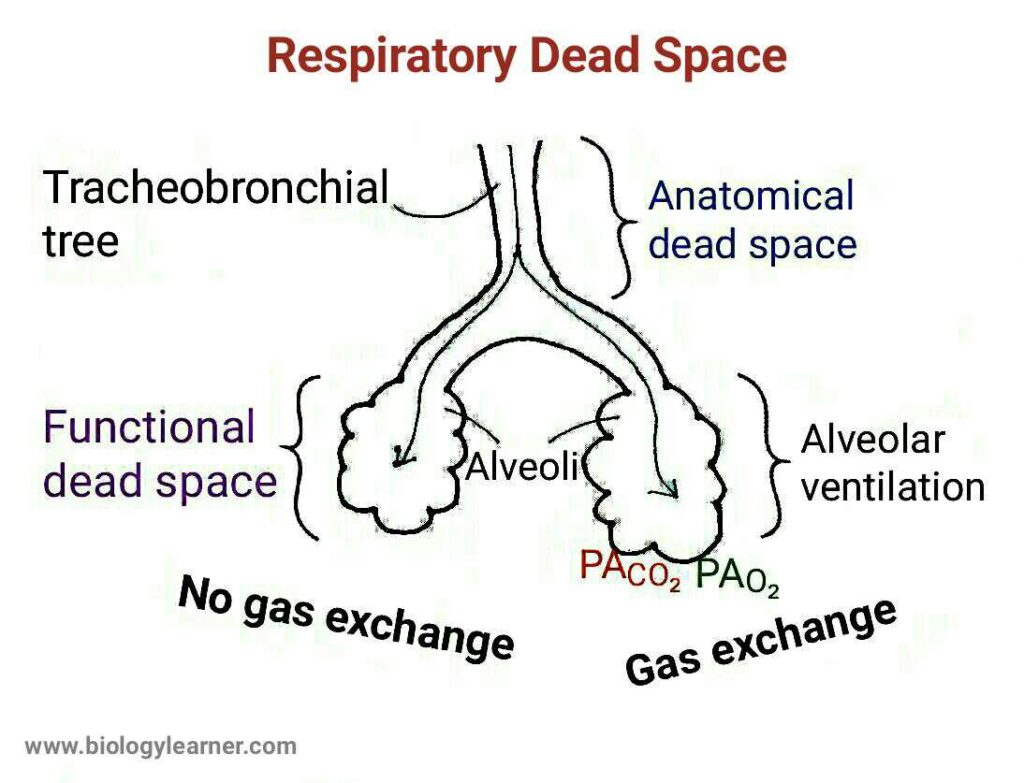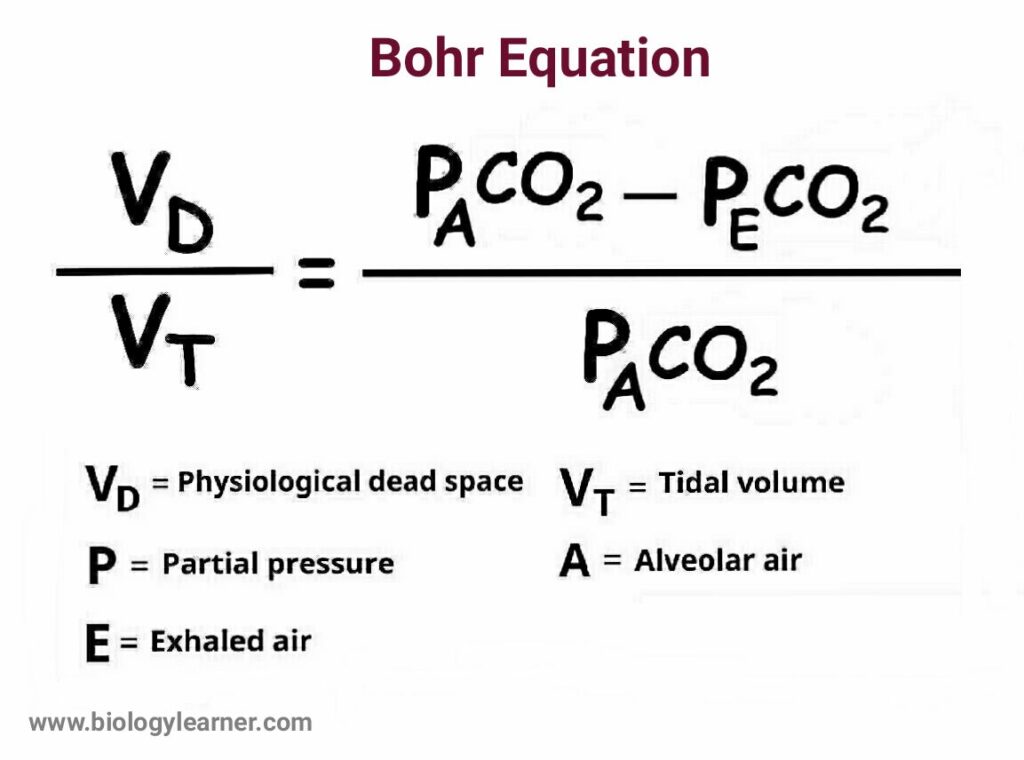The respiratory gases are taken during normal breathing extend into two regions between the respiratory tract i.e, the conducting zone and the respiratory zone.
The wall of the respiratory transport zone is thick enough and not suitable for gas exchange, So the air trapped in that place does not participate in the exchange of gases. This air is called dead space air and the components of this air do not change the result of respiration.
Definition of Respiratory Dead Space
The part of the respiratory tract where the trapped air does not participate in gaseous exchange is called respiratory dead space.
Types of Dead Space
Respiratory dead space is generally two types: Anatomical dead space and Physiological dead space.
Anatomical Dead Space
The volume of air that is confined to the transport area of the respiratory tract and does not participate in the exchange of gas is called anatomical dead space.
- Normal Value: The volume of anatomical dead space air is usually 150 ml and it is 20-30% of tidal volume (TV).
Physiological Dead Space
The air that is trapped at any point in the respiratory tract that does not participate in the gaseous exchange is called physiological dead space.

Physiological dead space = Anatomical dead space + Unused ventilated air
(Unused ventilated air = Unused air in the air sacs of the lungs + Excess received air)
- Normal Value: In the case of a normal person, the volume of air in the anatomical dead space is almost equal to the volume of air in the physiological dead space. Its normal value is around 150-200 ml.
Bohr’s Equation
The physiologically dead space can be determined by Bohr’s equation.

Significance of the Dead Space
- The respiratory air is saturated by water vapor in the anatomical dead space and enters the alveoli.
- In addition, particles larger than 2.0 μm in the inhaled air are trapped in this area before entering the alveoli.
- Increased physiological dead space and air volume indicate abnormalities of the alveoli.
